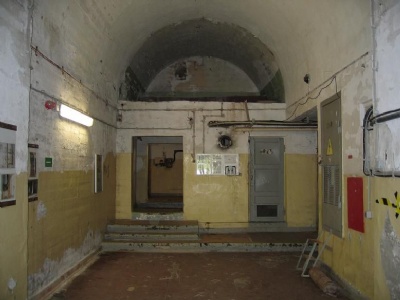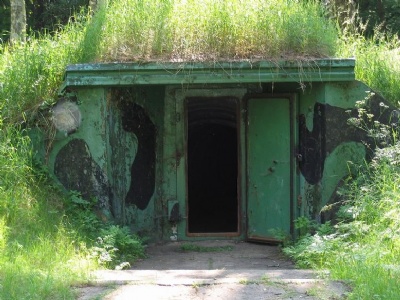Zossen
South of Berlin is Zossen and there between 1939 and 1945 had OKW and OKH their underground headquarters. The part of the headquarters where OKH stationed was called Maybach I while OKW was stationed at Maybach II. Both Maybach I and II were large bunker complexes on several floors.
OKW is an abbreviation of Oberkommando der Wehrmacht OKW and was founded in the autumn of 1938. OKW replaced the former war ministry that Hitler had dissolved in connection with the resignation of the war minister Werner von Blomberg in that autumn. OKW was a link between party and army (not Kriegsmarine and Luftwaffe) and gave Hitler an insight into military work in a way that had not previously been possible. This meant that Hitler could scrutinise the army more thoroughly than he could (and wanted) do with the Oberkommando der Marine (OKM) and the Oberkommando der Luftwaffe (OKL). Both OKM and OKL were significantly more independent and were not subjected to Hitler scrutiny and interference to the same extent as the army was. This did not mean that they could do as they wished, but Hitler interfered less in their operations. The head of OKW between 1938 and 1945 was field marshal Wilhelm Keitel, a great admirer and lackey of Hitler who obeyed the slightest hint from his master.
OKH is an abbreviation of Oberkommando des Heeres and was founded in 1936 and was the army’s highest organ. Its first commander was General Colonel Werner von Fritsch, who, however, was forced to resign in 1938 around the same time as war minister von Blomberg resigned. Fritsch was succeeded by field marshal Werner von Brauchitsch who remained in office until the military debacle outside Moscow in December 1941. Hitler then appointed himself head of the army. This meant in practice that OKH became a tool for OKW and Hitler’s scrutiny and involvement in the military operations became even more evident than before. Even before the debacle outside Moscow, there had been frictions between Hitler and OKH.
OKH was traditionally used to working independently without involvement from outsiders. Therefore, they often ended up on a collision course about how the war should be conducted, what goals should be reached and when they should be reached. But the military success at the beginning of the war OKH had opposed strengthened Hitler. Hitler’s declaration of war against the Soviet Union in June 1941 was also met with resistance from the OKH, who believed that a campaign against the Soviet Union should not begin before Britain had been defeated. Hitler, however, was of a different opinion and Soviet Union was attacked. Initially it looked like Soviet Union would be defeated quickly, just like Poland and France. But in the autumn and especially in the winter of 1941 the German army was stucked outside Moscow. From then on the tension between Hitler and OKH increased. These tensions remained for the rest of the war, and Hitler fired one general after another and then took them to mercy when the situation so demanded.
When the Soviet Red Army arrived at Zossen in 1945, they destroyed and plundered much of the interior. They even unsuccessfully tried to blow up parts of the complex. However, they came up with better thoughts and started using the bunkers for their own military purposes. Russia and the Soviet Union remained until 1994, when they finally handed over the area to the state of Brandenburg.
Current status: Partly preserved/demolished with museum (2006).
Location: 52° 11'35.46 N 13° 28'20.28 E
Get there: Car.
Follow up in books: Kampe, Hans George: The Underground Military Command Bunkers of Zossen (2000).




In addition to the underground bunkers, there are also bunkers above ground. These were camouflaged like houses so as not to arouse suspicion. The museum is still under construction and probably completely unknown outside military circles. It was att Zossen that Operation Barbarossa, attack on the Soviet Union, began to be planned in the summer of 1940.